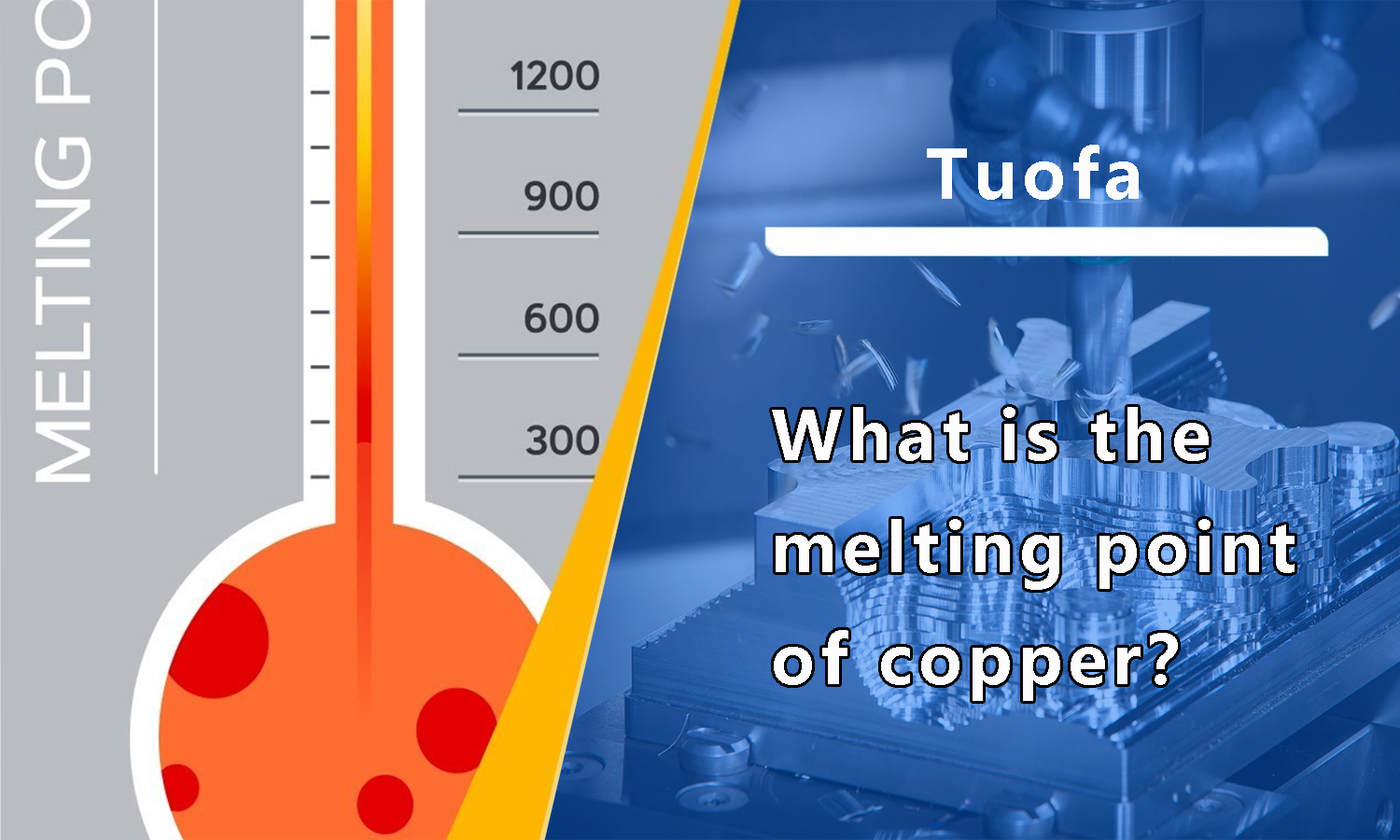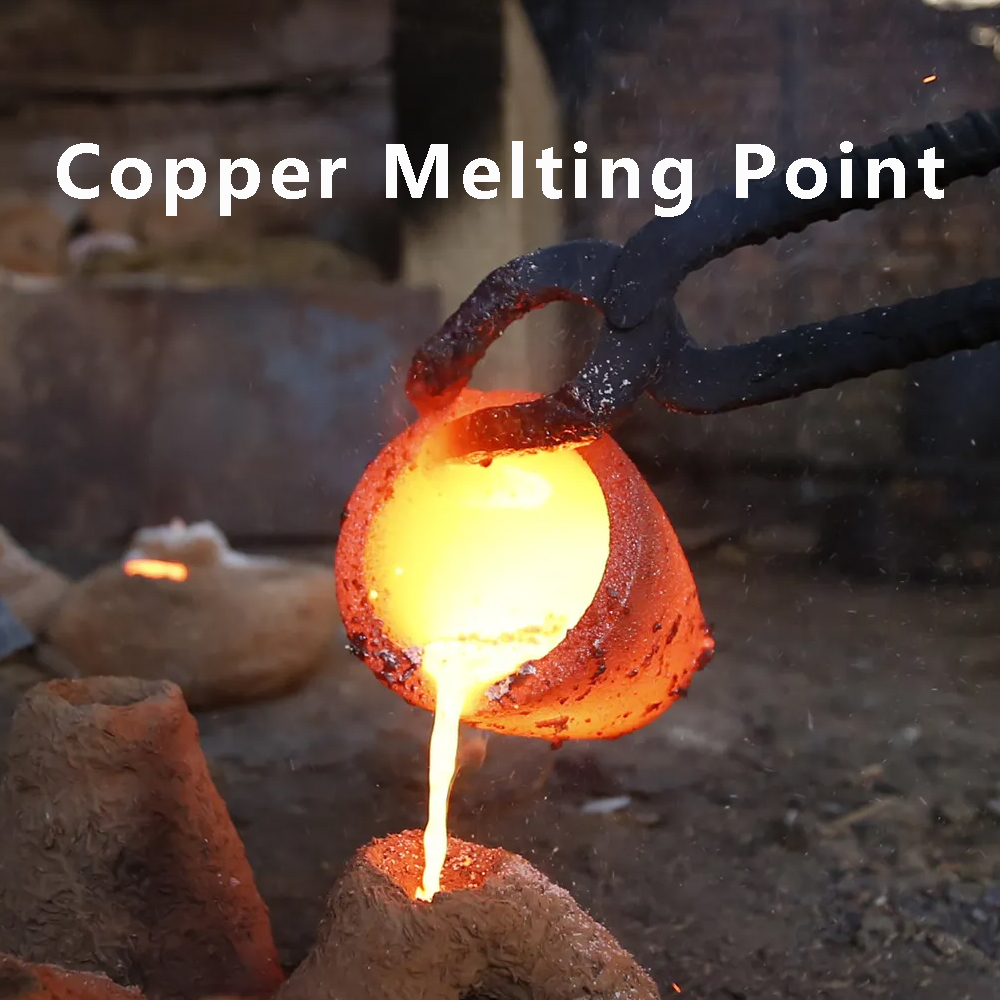What is the Melting Point of Copper?
 Jun 05,2024
Jun 05,2024

The melting point of copper is a crucial property. It influences copper's utility in various applications. As professionals in the manufacturing industry, understanding this fundamental characteristic is essential. It can enhance our processes and product quality. Copper has unique properties, including excellent thermal and electrical conductivity. These properties make it indispensable in many sectors. These sectors include electronics, construction, and the automotive industry. In this article, we will discuss the factors that affect it. We will also cover the methods of melting copper. Additionally, we will examine practical applications that enjoy this knowledge. Our goal is to provide you with valuable insights. These insights can be applied directly to your work.
What is the Melting Point of Copper?
The melting point is the temperature at which a solid turns into a liquid. For copper, this transition occurs at 1084.62°C (1984.32°F). This specific temperature is significant because it dictates the thermal processes copper can endure without changing its state. Understanding this property is vital for applications requiring precise thermal management.The exact melting point of pure copper is 1084.62°C (1984.32°F). This high melting point enables copper to maintain its integrity and performance in high-temperature applications, making it ideal for use in various industrial processes.

Importance of Knowing the Copper Melting Point
The melting point of copper is essential for processes involving casting, welding, and thermal treatments. Knowledge of this temperature helps in designing equipment and selecting materials that can withstand the operational conditions. Furthermore, understanding the melting point aids in ensuring the integrity and performance of copper components under various environmental and mechanical stresses.
Overview of Copper's Role in Various Industries
Copper is a versatile metal used across multiple industries due to its excellent electrical and thermal conductivities, corrosion resistance, and malleability. It is commonly found in electrical wiring, plumbing, roofing, and industrial machinery. In electronics, copper is crucial for the manufacture of printed circuit boards (PCBs) and heat sinks. The automotive industry relies on copper for components like radiators and brake tubing. Each application benefits from copper’s properties, which are influenced by its melting point.
Factors Affecting the Melting Point of Copper
The melting point of copper, a key factor in various industrial applications, can be influenced by several factors. Here's an overview of the primary factors affecting the melting point of copper:

Purity of the Copper
Impurities and alloying elements both play significant roles in altering the melting point of copper. Pure copper has a melting point of approximately 1085°C (1985°F), but this can be lowered by the presence of impurities such as oxygen, sulfur, and other metals. Additionally, when elements like zinc, tin, or nickel are added to copper to form alloys like brass or bronze, the melting characteristics of the metal change significantly.
Atmospheric Conditions
Exposure to different atmospheres at high temperatures can significantly influence the melting behavior of copper. In an oxidizing atmosphere, oxygen can cause the formation of copper oxides on the surface, which may slightly alter the metal's melting characteristics. Conversely, in a reducing atmosphere, such as one containing hydrogen, the melting point of copper can remain closer to that of the pure metal, as this environment helps to prevent oxidation.
Pressure
The melting point of copper, like most materials, increases with an increase in external pressure. At high pressures, the atoms in copper are forced closer together, requiring more energy to reach the molten state.
Grain Size
The size and arrangement of grains in the copper can influence its melting point. Fine-grained copper might melt at a slightly lower temperature than coarse-grained copper due to the higher energy at grain boundaries.
Crystal Structure
Copper has a face-centered cubic (FCC) crystal structure at room temperature, which remains stable up to its melting point. Any changes or defects in this crystal structure can affect melting.
Previous Heating
Copper that has been previously heated and cooled can have different thermal properties due to changes in microstructure, such as the presence of dislocations and vacancies.
Examples of Common Copper Alloys and Their Melting Points
Common copper alloys such as brass and bronze have unique melting points. Here is a detailed table of common copper alloys along with their melting points:
|
Alloy Name |
Composition |
Melting Point (°C) |
|
Brass |
Copper (60-70%), Zinc (30-40%) |
900-940 |
|
Bronze |
Copper (80-90%), Tin (10-20%) |
950-1050 |
|
Cupronickel |
Copper (70-90%), Nickel (10-30%) |
1100-1145 |
|
Aluminum Bronze |
Copper (85-92%), Aluminum (6-12%), Iron (up to 3%) |
1035-1050 |
|
Phosphor Bronze |
Copper (88-92%), Tin (6-10%), Phosphorus (up to 0.4%) |
950-1050 |
|
Beryllium Copper |
Copper (96-98%), Beryllium (1.5-2%), Cobalt (up to 0.6%) |
865-955 |
|
Nickel Silver |
Copper (60-70%), Nickel (10-20%), Zinc (10-20%) |
940-1020 |
|
Silicon Bronze |
Copper (95-97%), Silicon (2-4%), Manganese (up to 1%) |
950-1050 |
Methods of Melting Copper
Copper can be melted using various methods . These methods provide the high temperatures needed to liquefy copper efficiently and are chosen based on production scale and efficiency requirements.
Electric Resistance Heating
Electric resistance heating involves passing an electric current through a resistor to generate heat. This method is commonly used in industrial furnaces for melting metals, including copper. It is highly efficient and allows precise temperature control.
Induction Heating
Induction heating uses electromagnetic fields to heat copper. The metal is placed in a coil carrying alternating current, generating eddy currents and heat. This method is fast, efficient, and suitable for high-purity melts.
Laser Heating
Laser heating involves using concentrated laser beams to melt copper. This method is precise and can be used for small-scale applications, such as micro-welding or additive manufacturing.
Arc Melting
Arc melting uses an electric arc to generate intense heat for melting copper. It is suitable for high-purity applications and allows the metal to be melted in a controlled environment.
Plasma Arc Melting
Plasma arc melting involves using a plasma torch to achieve extremely high temperatures. This method is used for high-purity and high-melting-point materials, providing a clean and controlled melting environment.
Vacuum Melting
Vacuum melting involves melting copper in a vacuum to avoid contamination from gases. This method is essential for producing high-purity copper for electronic and aerospace applications.
Oxy-fuel Torch
The oxy-fuel torch uses a mixture of oxygen and fuel gases to produce a flame hot enough to melt copper. It is commonly used for small-scale operations and repairs.
Solar Furnace Melting
Solar furnace melting harnesses concentrated solar energy to melt metals. It is an eco-friendly alternative, although its practicality depends on the availability of consistent sunlight.

Comparing Melting Points of Copper and Other Metals
we'll compare the melting points of copper with other metals, categorized into common metals and alloys, and high-temperature metals.
Common Metals and Alloys
Common metals and alloys include steel, aluminum, copper, brass, bronze, titanium, nickel, and stainless steel. These materials are widely used in manufacturing, construction, and engineering due to their varied properties such as strength, conductivity, and corrosion resistance.
|
Metal/Alloy |
Melting Point (°C) |
Melting Point (°F) |
|
Copper |
1085 |
1985 |
|
Aluminum |
660 |
1220 |
|
Iron |
1538 |
2800 |
|
Gold |
1064 |
1947 |
|
Silver |
961.8 |
1763 |
|
Brass (Alloy) |
900 - 940 |
1652 - 1724 |
|
Bronze (Alloy) |
950 - 1050 |
1742 - 1922 |
|
Zinc |
419.5 |
787 |
|
Lead |
327.5 |
621.5 |
High-Temperature Metals
High-temperature metals, such as titanium, tungsten, molybdenum, and inconel, are designed to withstand extreme heat. They are essential in aerospace, power generation, and industrial applications due to their strength, stability, and resistance to thermal degradation.
|
Metal |
Melting Point (°C) |
Melting Point (°F) |
|
Nickel |
1455 |
2651 |
|
Titanium |
1668 |
3034 |
|
Tungsten |
3422 |
6192 |
|
Molybdenum |
2623 |
4753 |
|
Chromium |
1907 |
3465 |
|
Tantalum |
3017 |
5463 |
|
Rhenium |
3186 |
5762 |
Practical Applications of Copper's Melting Point
Copper is one of the most widely used metals in the manufacturing industry due to its excellent thermal and electrical conductivity, as well as its ductility and corrosion resistance.
Electrical Applications
Copper’s high melting point and excellent electrical conductivity make it ideal for electrical applications, such as wires, transformers, and heat sinks. These components require materials that can handle high currents and temperatures without degrading.
Welding and Soldering
In welding and soldering, copper’s melting point is critical for achieving strong, durable joints. Understanding the thermal properties helps in selecting appropriate filler materials and controlling the process parameters.
Casting and Molding
Copper is widely used in casting and molding due to its fluidity when molten and its ability to form complex shapes. Its melting point is a key consideration in designing molds and selecting casting methods.
Safety Considerations in Melting Copper
Melting copper requires proper safety measures to prevent accidents and health hazards. Necessary equipment includes heat-resistant gloves, face shields, and protective clothing. Adequate ventilation is essential to avoid inhaling harmful fumes. Proper handling and storage of molten copper are crucial to ensure a safe working environment.
Conclusion
Understanding the melting point of copper is crucial for its use in various industries. It's vital for making electrical components, and for casting and welding. This knowledge helps us improve processes and product quality. Factors like alloy composition and impurities are important. We must use the right melting techniques to create high-performance copper products for different uses. Keeping up with best practices ensures safety and efficiency in our operations. For more detailed insights and professional guidance on copper and CNC machining in China, visit Tuofa CNC Machining.
 Tel/WeChat:
Tel/WeChat:  Email:
Email: 
 Home
Home
 What is the Melting Point of Brass?
What is the Melting Point of Brass? 







